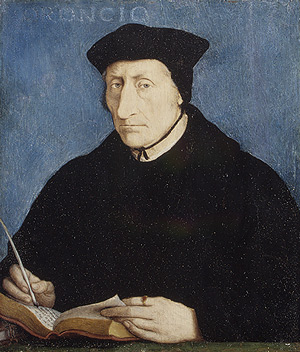16 Renaissance Culture in Europe 2
Ambrose Dubois, Allegory of Painting and Sculpture (Fontainebleau), ca 1600
Humanists and education
Broadening of “learned community”
universities
religious reform and faculties of theology
–religious curriculum reforms, humanist reforms
what changed at universities?
- arts course: use of logic; textbooks, training of professors
- study of “new” ancient languages added.
- examples: Greek taught at Cracow c. 1500; Alcalà c 1513; Leipzig 1515; Paris 1517 (unofficially earlier); Wittenberg 1518
- Hebrew: Leuven 1517 (Trilingual College ); Heidelberg 1519; Basel 1529; Paris 1530.
religion and theology
Biblical study. Protestant regions and “sola scriptura”
confessional boundaries and locations for study
urban growth and education
vernaculars: modern languages vs Latin
role of ruler: how and why
- chancery
- legal studies and political thought
- presentation of self: image
- prestige
- humanists aid in creating royal image
example:Valois kings of France, mainly Francis I
Francis I ruled 1515-47
1530: Collège Royale (later College de France) at University of Paris
regius professors of Greek, Latin, and Hebrew.
Guillaume Budé (1467-1540)
 |
Jean Clouet (French, d. 1540/41): Guillaume Budé, ca. 1536 |
Commentaries on the Greek Language, 1529
Annotations on the Pandects (1508—on Justinian Code)
Publishers: Stephanus or Estienne (Robert, Henri)
chateau at Fontainebleau. Rebuilding began 1527
Emulation of Roman, Greek past and regional European pasts
France and Trojans
Welsh (John Dee) and Celtic legends
Garcilaso ‘el Inca’ (1539-1616), Peruvian humanist
| House of Garcilaso in Cuzco, Peru |  |

